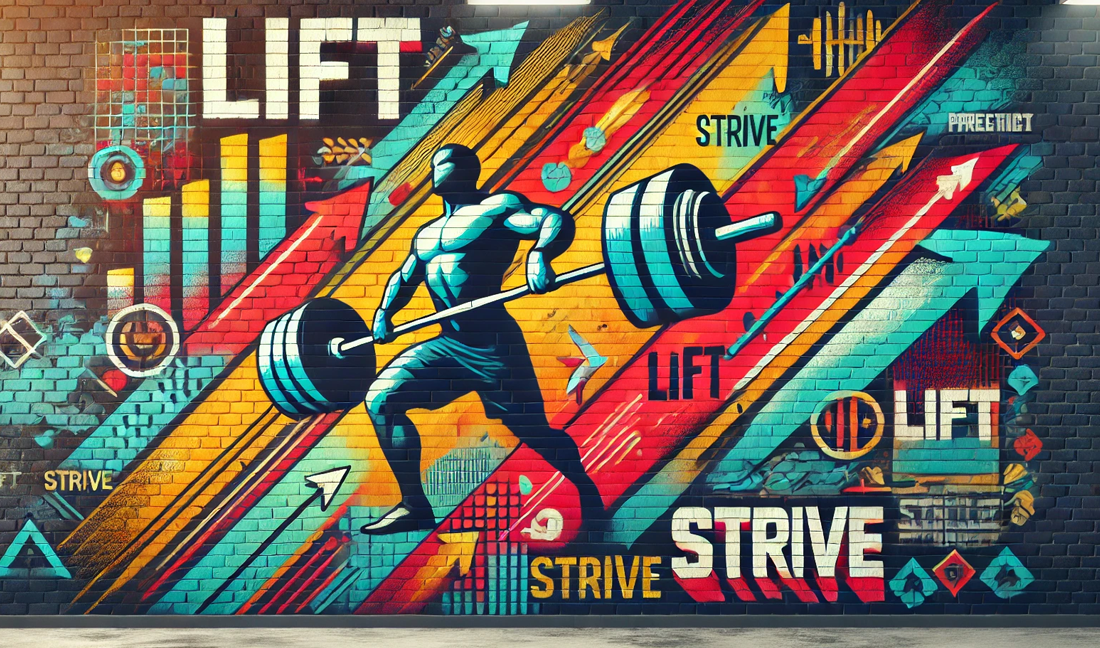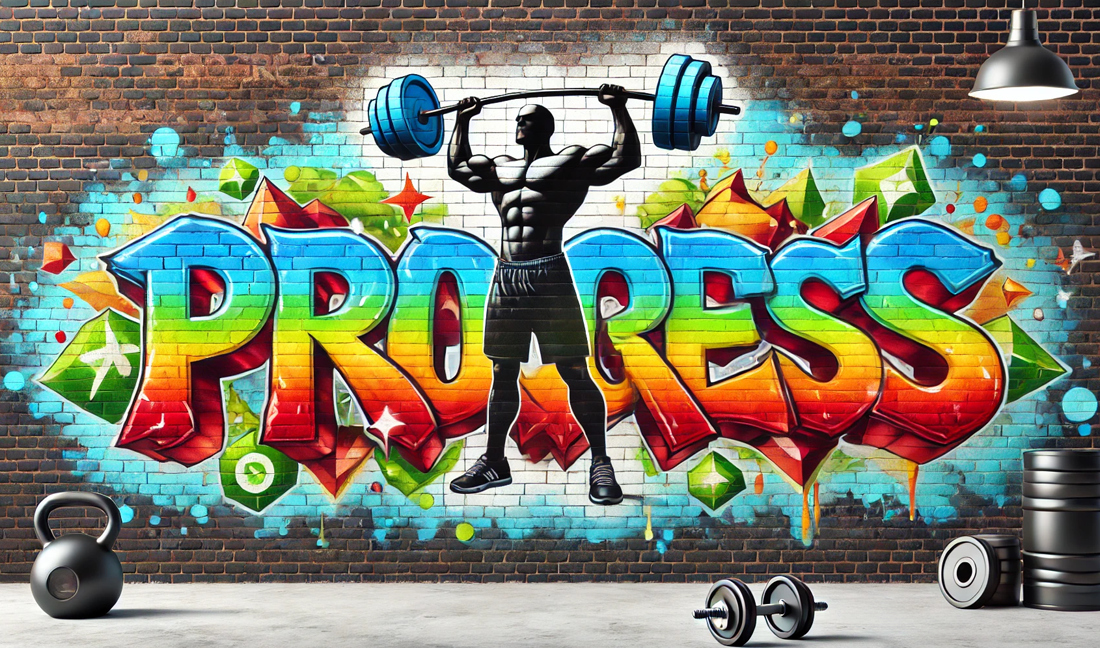Introduction
If you think strength training over 40 is only for elite athletes or bodybuilders, think again! Whether you’re a beginner or someone getting back into fitness, lifting weights is one of the most powerful ways to stay strong, lean, and healthy as you age.
Many people believe that once they hit 40, muscle loss, slower metabolism, and joint pain are inevitable – but that doesn’t have to be the case. With the right approach to strength training over 40, you can:
- Preserve & build muscle mass to maintain strength and definition
- Boost metabolism to burn fat and stay lean
- Improve bone density & joint health to prevent injuries
- Enhance flexibility & mobility for long-term functionality
- Increase testosterone & growth hormone naturally for better energy and recovery
The key is to train smart, focus on compound movements, and prioritize recovery to keep your body performing at its best. In this guide, we’ll cover the best strength training program, nutrition strategies, and common mistakes to avoid so you can stay strong and injury-free well into your 40s, 50s, and beyond.
1. Why Strength Training Becomes More Important After 40
As we age, muscle mass naturally declines, metabolism slows down, and joints may start to feel stiff or weak. However, strength training over 40 can reverse these effects, helping you stay strong, mobile, and lean well into your later years.
Here’s why lifting weights becomes even more critical once you hit 40:
1. Muscle Loss Begins Around Age 30 (But You Can Reverse It)
After the age of 30, most adults lose 3-8% of their muscle mass per decade due to a natural process called sarcopenia. This means by the time you hit 40, you may already be losing muscle at a faster rate – unless you strength train.
- Strength training preserves and rebuilds muscle tissue, helping you maintain a toned, athletic physique.
- More muscle = higher metabolism, making it easier to stay lean as you age.
- Resistance training tells your body to hold onto muscle, rather than breaking it down for energy.
💡 Key Takeaway: Without strength training, muscle loss accelerates. With the right program, you can reverse it.
2. Strength Training Boosts Metabolism & Prevents Weight Gain
Many people notice weight gain in their 40s, even if they’re eating the same way they did in their 20s. This is because muscle is the #1 driver of metabolism – and as muscle declines, your body burns fewer calories at rest.
- Lifting weights keeps your metabolism high, even while at rest.
- More muscle = higher daily calorie burn, making it easier to maintain a lean body.
- Strength training prevents the “middle-age spread” by keeping fat gain in check.
💡 Key Takeaway: Lifting weights isn’t just for muscle – it’s the secret to staying lean in your 40s and beyond.
3. Lifting Weights Improves Bone Density & Joint Health
One of the biggest risks of aging is osteoporosis (bone loss), which can lead to fractures, injuries, and joint pain. Strength training over 40 helps strengthen bones and joints, reducing the risk of fractures as you age.
- Weight-bearing exercises like squats & deadlifts increase bone mineral density.
- Stronger joints & muscles protect against injuries (especially knee, hip, and back pain).
- Mobility improves with strength training, preventing stiffness and keeping you active.
💡 Key Takeaway: Lifting weights strengthens your bones & joints, reducing the risk of injuries as you age.
4. Strength Training Enhances Flexibility & Mobility
Many people think strength training makes them stiff or less flexible, but the truth is – lifting weights actually improves mobility when done correctly.
- Squats, deadlifts, and lunges improve hip & knee mobility.
- Overhead presses & rows strengthen shoulders, reducing pain & stiffness.
- Functional training helps with balance & coordination, reducing the risk of falls.
💡 Key Takeaway: A good strength program doesn’t just build muscle—it keeps you mobile, flexible, and pain-free.
5. Boosts Testosterone & Growth Hormone Naturally
After 40, testosterone and growth hormone levels start declining, leading to fat gain, lower energy, and muscle loss. But there’s good news – strength training can naturally boost these hormones.
- Lifting weights increases testosterone production, improving muscle growth & fat loss.
- Heavy compound lifts like squats & deadlifts stimulate natural hormone release.
- Strength training fights age-related decline in energy & recovery.
💡 Key Takeaway: Lifting heavy isn’t just about muscle – it keeps your hormones optimized for fat loss & vitality.
6. It’s Never Too Late to Start Strength Training
The best part? It doesn’t matter if you’ve never lifted weights before – strength training over 40 can still transform your body and health.
Studies show that even people in their 70s & 80s can build muscle & strength with weightlifting. The key is to start smart, focus on proper form, and progressively increase intensity.
- Even 2-3 strength sessions per week can make a huge difference in body composition & health.
- It’s never too late to get stronger, leaner, and more athletic.
- Start where you are, and progress at your own pace!
💡 Key Takeaway: You can start strength training at ANY age and see benefits – it’s never too late!
Final Thoughts: Why Strength Training Over 40 Is Essential
- Prevents muscle loss & boosts metabolism
- Keeps bones strong & joints healthy
- Improves flexibility, mobility & balance
- Boosts testosterone & growth hormone naturally
- Reduces body fat & keeps you lean
- Can be started at any age – even with zero experience
2. How to Structure a Strength Training Program Over 40
Now that we know why strength training over 40 is essential, the next step is building a smart and effective workout plan. The key is to train for strength, mobility, and injury prevention, while avoiding overtraining or unnecessary stress on the joints.
Let’s break down the best workout structure, exercise selection, and training frequency to help you build muscle, burn fat, and stay injury-free.
Step 1: How Often Should You Train?
A good strength training schedule for men and women over 40 is:
- 3-4 strength training sessions per week – Enough to build muscle without overtraining.
- 45-60 minutes per workout – Focus on quality over quantity.
- At least one rest or active recovery day between heavy lifting sessions.
💡 Key Takeaway: Consistency beats intensity – train regularly, not excessively.
Step 2: Full-Body vs. Split Training – Which is Best?
There are two main training styles that work well for lifters over 40:
✅ Option 1: Full-Body Strength Workouts (Best for Beginners & Fat Loss)
- 3 sessions per week (e.g., Monday, Wednesday, Friday).
- Each workout hits all major muscle groups with compound movements.
- Allows more recovery between workouts, reducing injury risk.
Example Schedule:
- Monday – Full-Body Strength
- Wednesday – Full-Body Strength
- Friday – Full-Body Strength
- Sunday – Optional Mobility/Recovery
💡 Best for: Fat loss, overall strength, and injury prevention.
✅ Option 2: Upper/Lower Body Split (Best for Muscle Growth & Strength)
- 4 training sessions per week (e.g., Monday, Tuesday, Thursday, Friday).
- More focused on building muscle in each session.
- More volume per muscle group, better for hypertrophy (muscle growth).
Example Schedule:
- Monday – Upper Body Strength
- Tuesday – Lower Body Strength
- Wednesday – Rest or Active Recovery
- Thursday – Upper Body Strength
- Friday – Lower Body Strength
- Saturday & Sunday – Rest or Active Recovery
💡 Best for: Muscle growth, strength progression, and athletic performance.
Our free Blaze exercise and workout database is a great source of inspiration to find your next workout:
Step 3: The Best Strength Training Exercises Over 40
The best exercises focus on strength, mobility, and joint health. These movements target multiple muscle groups, helping you burn more calories and build more strength with fewer exercises.
Lower Body Exercises
- Squats (Goblet or Barbell) – Strengthens legs, core, and mobility.
- Romanian Deadlifts – Builds hamstring flexibility & posterior chain strength.
- Step-Ups or Bulgarian Split Squats – Enhances balance & knee stability.
- Glute Bridges or Hip Thrusts – Strengthens hips and reduces lower back pain.
Upper Body Exercises
- Bench Press or Push-Ups – Strengthens chest, shoulders & triceps.
- Pull-Ups or Lat Pulldown – Builds back strength & posture.
- Dumbbell Shoulder Press – Improves shoulder stability & strength.
- Rows (Barbell or Dumbbell) – Strengthens the back and core.
Core & Stability Exercises
- Planks & Side Planks – Core endurance and spinal stability.
- Dead Bugs & Hanging Leg Raises – Builds a strong lower core.
- Farmer’s Carries – Enhances grip strength & posture.
💡 Key Takeaway: Prioritize compound movements—they provide the most benefit in the least amount of time.
Make sure that you use an app such as the free Blaze Fitness to track your workout progress:
Workout Tracking
With Blaze Workout, you have access to a huge variety of metrics. This allows you to review your progress over time under different angles.
Take your workout to the next level!
🔥 Step 4: Sample Strength Training Program (3-Day Full-Body Split)
Day 1: Strength & Power (Lower Focus)
| Exercise | Sets / Reps |
|---|---|
Squats | 4 sets of 6-8 reps. |
Romanian Deadlifts | 3 sets of 10 reps. |
Step-Ups | 3 sets of 10 reps (each leg). |
Hanging Leg Raises | 3 sets of 15 reps. |
Farmer’s Carries | 3 rounds of 30 seconds. |
Day 2: Upper Body & Core
| Exercise | Sets / Reps |
|---|---|
Bench Press or Push-Ups | 4 sets of 8 reps. |
Pull-Ups or Lat Pulldown | 3 sets of 10 reps. |
Dumbbell Shoulder Press | 3 sets of 10 reps. |
Rows (Dumbbell or Barbell) | 3 sets of 12 reps. |
Plank Hold | 3 rounds of 45 seconds. |
Day 3: Strength & Mobility (Full Body Focus)
| Exercise | Sets / Reps |
|---|---|
Deadlifts | 4 sets of 6 reps. |
Bulgarian Split Squats | 3 sets of 10 reps per leg. |
Overhead Press | 3 sets of 10 reps. |
Glute Bridges | 3 sets of 12 reps. |
Side Planks | 3 rounds of 30 seconds per side. |
💡 Key Takeaway: A simple, effective program focusing on strength, mobility, and longevity.
Step 5: How to Progress & Get Stronger Over Time
Strength training should get progressively harder over time so your muscles keep adapting. Here’s how to make consistent gains without injury:
- Increase weight gradually – Add 2.5-5% more weight every few weeks.
- Improve form before adding weight – Prioritize technique over ego lifting.
- Use slower negatives – Lower the weight under control to build strength faster.
- Rest & recover properly – More isn’t always better – train smart.
💡 Key Takeaway: Progressive overload is key – gradually increase weight, reps, or intensity over time.
Final Thoughts on Structuring Strength Training Over 40
- Train 3-4x per week for best results.
- Use compound exercises for efficiency & maximum strength.
- Prioritize mobility & joint health with proper warm-ups.
- Progress slowly & safely – injuries take longer to recover from after 40.
- Stay consistent – muscle growth happens over months, not weeks.
For more workout ideas, visit our exercise and workout database:
3. Strength Training Recovery & Injury Prevention Over 40
As you age, recovery becomes just as important as training itself. When you’re in your 20s, you can get away with poor recovery habits – but in your 40s, ignoring recovery can lead to joint pain, injuries, and stalled progress.
Let’s dive into the best recovery strategies and injury prevention techniques to keep you strong, mobile, and pain-free.
Step 1: Why Recovery Matters More After 40
As we age, our body:
- Takes longer to recover from intense workouts
- Has reduced flexibility and joint lubrication
- Needs more rest between heavy lifting sessions
With proper recovery, you can train harder and stay injury-free. Recovery-focused training helps build strength while protecting your joints.
💡 Key Takeaway: Training smart is better than training excessively. Recovery is essential.
Step 2: The Best Recovery Methods for Lifters Over 40
Here are the top recovery techniques to keep muscles and joints healthy:
- Prioritize Sleep (7-9 Hours Per Night) – Sleep is where your muscles repair and grow.
- Use Active Recovery (Light Cardio, Walking, or Yoga) – Helps reduce muscle stiffness.
- Stretch & Foam Roll Daily – Prevents stiffness and improves range of motion.
- Hydrate & Replenish Electrolytes – Helps reduce muscle cramps and soreness.
- Eat Enough Protein & Nutrients – Your body needs proper fuel to rebuild muscle.
- Limit Excessive Alcohol & Processed Foods – These slow down recovery and cause inflammation.
💡 Key Takeaway: Faster recovery = better training sessions & long-term gains.
Step 3: Injury Prevention Tips for Strength Training Over 40
One of the biggest mistakes lifters over 40 make is not adjusting their training to their body’s needs. Follow these key injury prevention strategies:
✅ 1. Warm-Up Properly Before Every Workout
- Start with 5-10 minutes of light cardio (rowing, cycling, incline walking).
- Perform dynamic stretches (leg swings, arm circles, hip openers).
- Do warm-up sets before jumping into heavy lifts.
✅ 2. Focus on Mobility & Joint Health
- Ankles, hips, and shoulders should stay mobile for pain-free movement.
- Use resistance bands for shoulder and hip mobility drills.
- Avoid ego lifting – your form is more important than the weight.
✅ 3. Choose Joint-Friendly Exercises
- Use dumbbells instead of barbells for more natural movement patterns.
- Swap barbell back squats for goblet squats if you have lower back pain.
- Avoid excessively heavy bench pressing – use push-ups or dumbbell presses instead.
✅ 4. Don’t Train to Failure Every Workout
- Leave 1-2 reps in the tank on big lifts to reduce joint strain.
- Use lighter days & deload weeks to prevent overuse injuries.
- If you feel pain, adjust exercises instead of pushing through.
✅ 5. Strengthen Supporting Muscles & Tendons
- Add rotator cuff exercises (banded external rotations) to protect shoulders.
- Strengthen your core (planks, carries) to prevent lower back pain.
- Include glute and hamstring work (hip thrusts, Romanian deadlifts) to protect knees.
💡 Key Takeaway: Lift smart, train for longevity, and avoid unnecessary wear and tear.
Step 4: The Role of Nutrition in Recovery
What you eat after training affects how quickly you recover. Follow these key nutrition strategies:
- Protein Intake (0.8-1.2g per lb of body weight) – Muscle recovery starts with protein.
- Healthy Fats (Avocados, Nuts, Olive Oil, Salmon) – Reduces inflammation and supports joints.
- Complex Carbs (Oats, Sweet Potatoes, Brown Rice) – Replenishes glycogen for energy.
- Hydration (Drink 1 gallon of water daily) – Prevents cramping and fatigue.
- Omega-3s & Collagen – Helps reduce joint pain and improve flexibility.
💡 Key Takeaway: Proper nutrition speeds up muscle recovery and reduces soreness.
Step 5: Supplements That Can Help Recovery & Joint Health
While real food is the foundation, certain supplements can enhance muscle recovery and joint strength:
- Creatine Monohydrate – Helps with strength, endurance, and recovery.
- Collagen Protein – Supports joint health & connective tissues.
- Magnesium & Zinc – Improves muscle relaxation & sleep quality.
- Omega-3 Fish Oil – Reduces inflammation & joint stiffness.
- Turmeric & Curcumin – Helps reduce soreness & arthritis risk.
🚫 What to Avoid?
- High-caffeine pre-workouts – Can increase cortisol & joint stress.
- Excessive NSAIDs (Ibuprofen, etc.) – Can interfere with muscle recovery.
💡 Key Takeaway: Recovery-focused supplements support longevity, but real food is always #1.
Final Thoughts: Recovery & Injury Prevention Over 40
- Prioritize sleep & hydration for better recovery.
- Train smarter, not harder – warm up & use joint-friendly exercises.
- Include mobility & stretching to keep your body moving pain-free.
- Support recovery with proper nutrition & supplements.
- Listen to your body – progress takes time, but smart training keeps you strong for years.
4. Nutrition for Strength & Muscle Growth After 40
Building muscle and staying strong after 40 isn’t just about lifting weights – it’s also about eating the right foods to support muscle repair, energy, and overall health.
As we age, hormonal changes, metabolism shifts, and recovery times increase, making nutrition more critical than ever. The goal is to fuel workouts, optimize recovery, and keep body fat in check while maintaining muscle mass.
Let’s break down the best nutrition strategies for strength training over 40 so you can maximize your gains and feel stronger than ever.
Step 1: Protein is King for Muscle Retention
As we age, our bodies become less efficient at using protein to build muscle—which means we need more high-quality protein to maintain lean mass.
- Aim for 0.8 – 1.2g of protein per pound of body weight (Example: A 180lb person should eat 144-216g of protein daily).
- Distribute protein intake evenly throughout the day (20-40g per meal).
- Choose complete protein sources that contain all essential amino acids.
Best Protein Sources for Strength & Recovery
- Lean meats (chicken, turkey, lean beef, bison)
- Fish (salmon, tuna, cod) – rich in omega-3s for joint health
- Eggs & egg whites – high in leucine, a key muscle-building amino acid
- Greek yogurt & cottage cheese – high-protein & gut-friendly
- Plant-based: Lentils, quinoa, tempeh, tofu, pea protein
💡 Key Takeaway: Protein intake is essential to maintaining and building muscle—don’t neglect it.
Step 2: Smart Carbohydrates for Energy & Recovery
Many people over 40 think cutting carbs is the key to losing fat, but in reality, carbs are critical for fueling workouts and muscle recovery. The key is choosing the right carbs and timing them correctly.
- Eat most of your carbs around workouts (pre & post-training).
- Prioritize complex, slow-digesting carbs to prevent blood sugar spikes.
- Limit refined sugars & processed carbs, which can lead to fat gain.
Best Carbohydrate Sources for Lifters Over 40
- Oats, quinoa, brown rice – great for steady energy & digestion
- Sweet potatoes & whole wheat pasta – nutrient-dense & muscle-fueling
- Fruits (berries, bananas, apples) – packed with fiber, vitamins & antioxidants
- Beans & legumes – protein + fiber combo for sustained energy
💡 Key Takeaway: Carbs are fuel, not the enemy. Use them strategically to boost performance & recovery.
Step 3: Healthy Fats for Hormonal Balance & Joint Health
As we age, testosterone, growth hormone, and other key muscle-building hormones decline. Healthy fats play a crucial role in hormone production, joint health, and brain function.
- Avoid ultra-low-fat diets – they can negatively impact testosterone & energy levels.
- Prioritize omega-3s & monounsaturated fats for inflammation control & heart health.
Best Healthy Fat Sources for Strength & Longevity
- Avocados – supports heart health & hormone function
- Nuts & seeds (almonds, walnuts, chia, flax) – great for brain & joint health
- Olive oil & coconut oil – anti-inflammatory & great for cooking
- Fatty fish (salmon, sardines, mackerel) – rich in omega-3s for joint support
- Whole eggs – cholesterol helps natural testosterone production
💡 Key Takeaway: Healthy fats are essential for strength, recovery, and hormone balance – don’t fear them.
Step 4: Hydration & Electrolytes for Performance & Recovery
As we age, dehydration becomes more common, leading to fatigue, cramps, joint pain, and slower recovery. Proper hydration is key to staying strong and reducing injury risk.
- Drink at least 3-4L (1 gallon) of water per day.
- Consume electrolytes (sodium, potassium, magnesium) to prevent muscle cramps.
- Limit alcohol & excessive caffeine, which dehydrate the body.
Best Hydration Strategies
- Start your morning with 16 oz of water + lemon to kickstart digestion.
- Drink water before meals to prevent overeating & dehydration.
- Add sea salt to water (if sweating heavily during workouts).

💡 Key Takeaway: Proper hydration keeps joints healthy, muscles performing, and recovery optimal.
Step 5: Supplements for Strength Training Over 40
While real food should always be the priority, certain supplements can support muscle growth, recovery, and overall strength.
Best Supplements for Lifters Over 40
- Creatine Monohydrate – Improves strength, endurance & muscle retention
- Collagen Protein – Supports joint health & connective tissues
- Magnesium & Zinc – Aids in muscle relaxation, sleep & recovery
- Whey or Plant-Based Protein Powder – Helps meet daily protein intake
- Omega-3 Fish Oil – Reduces inflammation & joint stiffness
- Vitamin D3 + K2 – Supports bone density & testosterone production

What to Avoid?
- Fat burners (ineffective unless your diet is dialed in).
- BCAAs (unnecessary if you eat enough protein).
- High-caffeine pre-workouts (can raise cortisol & impact recovery).
💡 Key Takeaway: Supplements can help, but they’re not a replacement for a solid diet.
Final Thoughts on Nutrition for Strength Training Over 40
- Protein is essential – aim for 0.8-1.2g per lb of body weight.
- Carbs should be timed around workouts for energy & recovery.
- Healthy fats support hormones & joint health – don’t fear them.
- Hydration & electrolytes are critical for muscle function.
- Supplements can help, but real food is the priority.
5. Common Strength Training Mistakes Over 40 & How to Avoid Them
Strength training after 40 can help you stay strong, build muscle, and maintain mobility, but only if you do it the right way. Many people make avoidable mistakes that lead to injuries, stalled progress, or frustration.
Here are the most common mistakes lifters over 40 make – and how to fix them.
Mistake #1: Skipping Warm-Ups & Mobility Work
The Mistake: Jumping straight into lifting without properly warming up.
Why It’s a Problem:
- Increased injury risk (especially in shoulders, knees, and lower back).
- Less joint lubrication—leading to stiffness and pain.
- Lower muscle activation, which means weaker lifts.
The Fix:
- Start every workout with 5-10 minutes of dynamic stretching & mobility work.
- Foam roll tight muscles (quads, hamstrings, lower back) before lifting.
- Perform warm-up sets before adding heavy weights.
💡 Key Takeaway: A proper warm-up reduces injury risk and improves performance.
Mistake #2: Lifting Too Light (Not Challenging Your Muscles Enough)
The Mistake: Avoiding heavier weights in favor of light, high-rep training.
Why It’s a Problem:
- You won’t build or maintain muscle effectively.
- Light weights don’t provide enough stimulus for strength gains.
- Progress stalls because your muscles aren’t being challenged.
The Fix:
- Use a weight that challenges you in the 6-12 rep range.
- If you can easily do 15+ reps, it’s time to increase the weight.
- Prioritize compound movements (squats, deadlifts, presses) to maximize strength.
💡 Key Takeaway: Lift heavy enough to challenge your muscles—progressive overload is key.
Mistake #3: Doing Too Much Cardio & Not Enough Strength Training
The Mistake: Thinking excessive cardio is the best way to lose fat after 40.
Why It’s a Problem:
- Too much cardio can break down muscle mass, slowing metabolism.
- Strength training burns calories long after your workout ends.
- Endless cardio leads to overuse injuries & joint pain.
The Fix:
- Prioritize strength training (3-4x per week) over excessive cardio.
- Use HIIT or moderate-intensity cardio (2-3x per week) instead of long-distance running.
- Focus on strength first, then add cardio as needed.
💡 Key Takeaway: Lifting weights is more effective for fat loss & muscle preservation than excessive cardio.
Mistake #4: Not Allowing Enough Recovery Time
The Mistake: Training too often without proper rest.
Why It’s a Problem:
- Muscles grow during recovery – not during workouts.
- Overtraining leads to fatigue, joint pain, and increased injury risk.
- Testosterone & growth hormone levels drop with too much stress.
The Fix:
- Train 3-4 times per week and prioritize rest days.
- Get 7-9 hours of sleep per night for muscle recovery.
- Use active recovery (walking, stretching, yoga) instead of excessive lifting.
💡 Key Takeaway: More training isn’t always better – recovery is where real progress happens.
Mistake #5: Ignoring Flexibility & Mobility Work
The Mistake: Focusing only on strength and neglecting flexibility & mobility.
Why It’s a Problem:
- Tight muscles lead to joint pain & poor movement patterns.
- Lack of mobility reduces range of motion & limits strength gains.
- More stiffness = higher risk of injuries.
The Fix:
- Add 5-10 minutes of mobility work before every workout.
- Stretch tight muscles (hip flexors, hamstrings, shoulders) daily.
- Incorporate yoga or dynamic stretching to improve flexibility.
💡 Key Takeaway: Strength is important, but mobility keeps you pain-free & moving well.
Mistake #6: Not Eating Enough Protein & Nutrients
The Mistake: Underestimating protein intake and not fueling properly.
Why It’s a Problem:
- Muscle loss happens faster when protein is too low.
- Lack of nutrients leads to slower recovery & weaker performance.
- Lower testosterone & energy levels from poor diet choices.
The Fix:
- Eat 0.8-1.2g of protein per pound of body weight daily.
- Choose high-quality protein sources (lean meats, fish, eggs, Greek yogurt).
- Balance meals with healthy fats and slow-digesting carbs.
💡 Key Takeaway: Muscle growth & recovery depend on proper nutrition – fuel your body well.

Mistake #7: Not Adjusting Workouts for Age & Joint Health
The Mistake: Trying to train exactly like you did in your 20s.
Why It’s a Problem?
- Joints are more sensitive to heavy loading over time.
- Ignoring modifications can lead to unnecessary pain & injuries.
- Too much high-impact training can wear down cartilage & tendons.
The Fix:
- Use joint-friendly movements (dumbbells, machines, resistance bands).
- Reduce high-impact training (limit heavy barbell squats & jumps if needed).
- Train smart – focus on control, not just heavy weights.
💡 Key Takeaway: Your body changes over time—adjust your workouts to train smarter, not harder.
Conclusion: How to Stay Strong, Lean, and Injury-Free After 40
Strength training over 40 isn’t just about lifting weights—it’s about training smarter, not harder, and adapting to your body’s changing needs. The right approach to fitness in your 40s and beyond can help you build muscle, burn fat, and stay injury-free for years to come.
Final Key Takeaways for Strength Training Over 40
- Prioritize strength training (3-4x per week) to maintain muscle & boost metabolism.
- Train with compound movements (squats, deadlifts, presses) for maximum efficiency.
- Warm up properly & include mobility work to prevent injuries & stiffness.
- Use joint-friendly exercises & proper form – ego lifting leads to setbacks.
- Protein is key (0.8-1.2g per pound of body weight) for muscle retention & fat loss.
- Carbs are fuel – use them strategically around workouts for energy & recovery.
- Hydrate properly & supplement wisely (creatine, collagen, omega-3s) for performance & longevity.
- Listen to your body – progress comes from consistency, not extreme workouts.
- Rest & recover properly – muscles grow when you sleep, not just when you train.
- Adjust training as needed – what worked at 25 may not work at 45, and that’s okay.
Your Next Steps: Take Action Today!
- Start Now – Pick a training plan (3-4 days per week) and commit to proper nutrition.
- Track Progress – Focus on strength levels, mobility, and body composition (not just weight).
- Optimize Nutrition – Keep protein intake high, eat whole foods, and stay hydrated.
- Stay Consistent – Strength training is a long-term investment in your health & longevity.
We have developed a great companion for your strength training journey. Our free iPhone app is a great way to track your weightlifting progress. It has an AI-powered virtual coach accessible from every screen. Check it out on the Apple App Store.
Final Motivation:
You are never too old to start lifting, building strength, and transforming your body. Your 40s, 50s, and beyond can be your strongest years yet – but only if you train smart and stay consistent. Strength doesn’t decline because you age – it declines because you stop training for it. Keep lifting, stay active, and be the strongest version of yourself!













